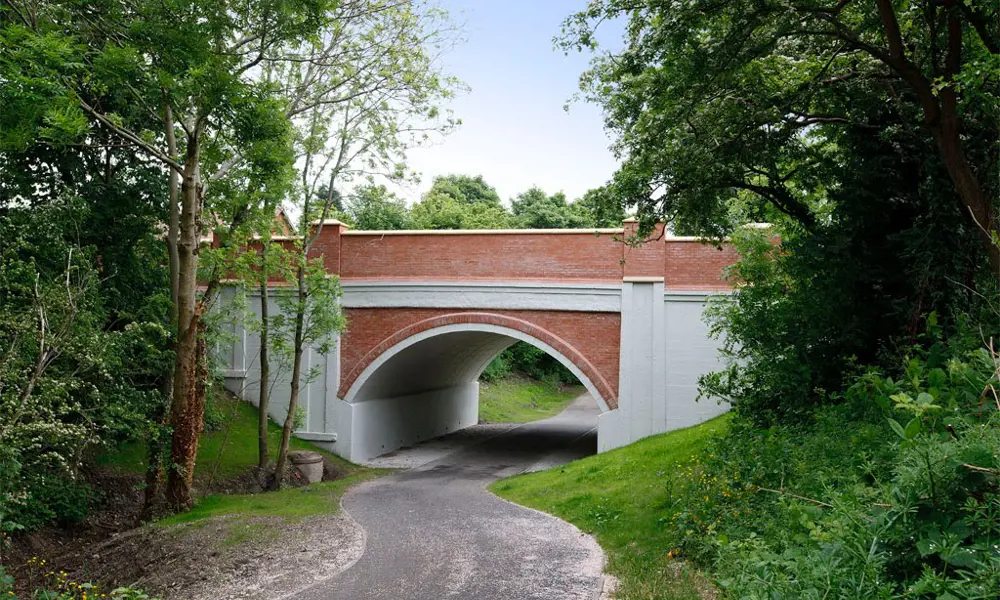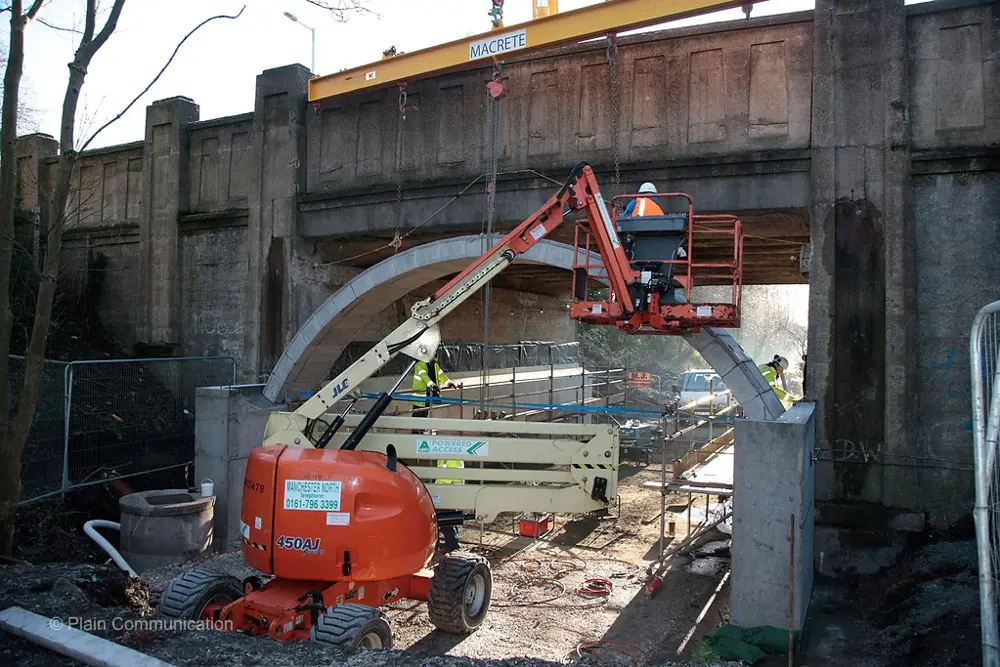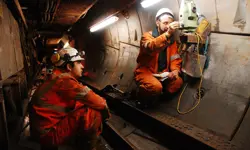
FlexiArch

Each 1 m wide FlexiArch unit is lifted off by a single crane. As the FlexiArch unit is lifted, it centre sunder its own weight © Plain Communications
Ten years ago, Professor Adrian Long FREng of Queen’s University Belfast, patented a system for building structures with all the positive attributes of conventional masonry arches, but which were able to be assembled quickly and economically.
The trouble with traditional masonry arches is that they are slow and expensive to construct. The voussoirs - the wedge-shaped stones forming the arch – are difficult to cut accurately and temporary timber centering is needed to support the arch while it is built. Using brick instead of masonry still requires centering, and rigid precast reinforced concrete arches can lead to long-term maintenance problems.
Long’s solution was a system of pre-casting concrete voussoirs for rapid assembly and ease of transport, making use of one of the main advantages of the arch:the principal forces are compressive, so no reinforcing steel is required. With help from various grants, Long worked with Macrete, precast concrete engineers from Northern Ireland, to produce a system which is user-friendly for contractors.
The voussoirs are first cast in un-reinforced concrete, with angles calculated to produce the correct curvature of the arch when completed. These are then laid side-by-side on the flat with their top, wider edges touching, and a layer of polymeric reinforcement is placed on top. Then, a 40 mm layer of screed (fine aggregate concrete) is placed on top and allowed to harden, holding the voussoirs together.
Tests show that the Macrete Flexi Archbridges have enormous reserves of strength,and early applications have confirmed that each unit can be placed on site in as little as 10-15 minutes
Several such slabs can then be transported easily to site, in flat-pack form.When lifted from the truck at designated lifting points, gravity causes the arch to flex into its final form, governed by the angle of the voussoirs.
Tests show that the Macrete Flexi Archbridges have enormous reserves of strength,and early applications have confirmed that each unit can be placed on site in as little as 10-15 minutes. Over 50 FlexiArch 4 m-16 m span bridges have been installed in the UK and Ireland and plans are in place to increase the maximum span to 30 m. Discussions are currently underway with companies in Australasia, USA and Sweden with a view to sub-licensing the technology.
***
This article has been adapted from "FlexiArch", which originally appeared in the print edition of Ingenia 61 (December 2014).
Keep up-to-date with Ingenia for free
SubscribeRelated content
Civil & structural

Building the Shard
The Shard is one of London's most iconic buildings. The tallest in Western Europe, it was designed by Italian architect Renzo Piano and dominates the city’s skyline. Ingenia spoke to John Parker, project director for structural engineers WSP, who outlined the engineering decisions made in building the enormous steel and glass structure.

Creating user-friendly buildings
For Michelle McDowell, a former Business Woman of the Year, a passion for joined-up design thinking and building information modelling with a user-friendly approach has enabled her to pioneer revolutionary changes in her field.

Troja Bridge
In November 2014, one of the world’s largest network arch bridges was officially opened in Prague. The UK may soon have its first network arch bridge if the go-ahead is given for a new rail project in Manchester.

Tunnel boring navigation
With no surface reference points, underground surveying requires specialised skills in order to gain trustworthy accuracy for the surveying team. Find out what techniques are used to measure distance, maintain position and cope with curved alignments in tunnels.
Other content from Ingenia
Quick read

- Environment & sustainability
- Opinion
A young engineer’s perspective on the good, the bad and the ugly of COP27

- Environment & sustainability
- Issue 95
How do we pay for net zero technologies?
Quick read

- Transport
- Mechanical
- How I got here
Electrifying trains and STEMAZING outreach

- Civil & structural
- Environment & sustainability
- Issue 95